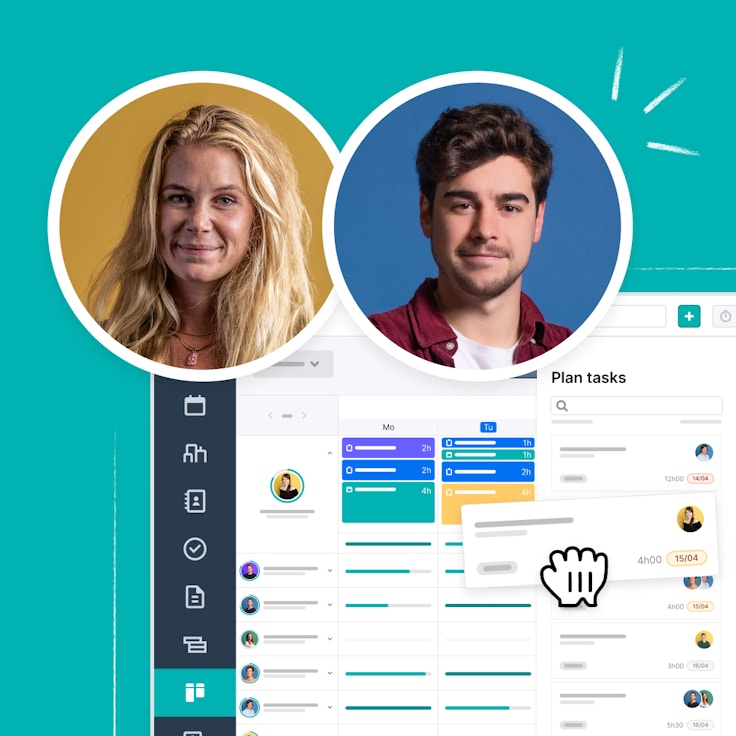Which project management methods can help you with your next project?

Agile project management is a dynamic way of working together that allows you to respond quickly to new or changed deliverables, even when they appear late in the project.
The aim of agile working is to respond flexibly to customers' needs and requirements. By completing and delivering small subtasks each time, you improve customer satisfaction. It is a convenient approach for smaller projects, where there are less unknown variables that could hinder the project's progress.
The agile method is often applied to the development of software and other products that want to innovate quickly. It is also popular in marketing, as it allows you to adjust quickly, move forward and meet your objectives.
The word scrum actually comes from rugby: there it is a way of resuming the game after a minor foul. In project management, it stands for an approach based on the agile method, with short, consecutive sprints in which clear tasks are defined each time.
The advantage of scrum is that it makes project management less complex. Moreover, it allows changes to be dealt with smoothly, thus working incrementally on the quality of a product. The schedule is clear: short sprints that follow one another.
Like the agile method, scrum is mainly used in software development. You can also apply it in event planning - or other sectors that often need to be flexible with goals and deliverables.
Waterfall project management or the waterfall method is a linear way of tackling projects. The name refers to the flow the project follows: the next phase starts only when the previous one has been successfully completed. So there are no overlapping project phases.
The advantage of this model is that it is clear and easy to use: each task and phase is completed within a well-defined timeframe. Making changes during the project is more difficult with this approach. This makes the method less flexible.
The waterfall method is very suitable for projects that require a highly structured approach, such as construction or production projects. Adjustments or readjustments are often expensive in those kinds of projects, so they are usually not an issue anyway.
Besides the three ‘big’ methods, there are of course other ways to bring your project to a successful conclusion. A brief overview.
The Project Management Institute (PMI) is an organisation responsible for the certification of project management and standards. It is the publisher of the PMBOK: short for ‘project management body of knowledge’. That book collects the processes, best practices, terminology and guidelines commonly accepted in the industry.
This project management method works with sequential tasks that are interdependent. In doing so, it distinguishes between critical and non-critical tasks. The latter do not have to be completed to start a new task. In this way, you create a clear action plan to avoid bottlenecks.
Emphasises who and what you need to bring your project to a successful conclusion: which team, which applications, infrastructure, .... It is similar to CPM, but basically reverses the order.
Was developed by Toyota engineer Taiichi Ohno to improve production efficiency. It is based on lean principles and the workflow is inspired by that of a production line, with each task going through several stages.
A way to improve the quality of software projects, often used when requirements are not quite fixed or change frequently. The method uses short development cycles and multiple releases.
Aims to achieve more with fewer resources. By reducing waste, you increase the value of projects and production processes. Applications in the software sector redefined 'lean', including rapid prototyping, end-user feedback and rapid delivery.
Used to minimise the risk of errors and improve the quality of projects by continuously optimising processes. The keywords are quality and stable results.
Stands for Projects In Controlled Environments and was once created by the UK government for IT projects. It is a rather traditional method similar to Waterfall, which divides projects into different phases.
Project management with Teamleader Orbit
Teamleader Orbit makes planning and managing projects as easy as possible. The clear drag-and-drop planning immediately shows who is available to work on a project and predicts your capacity in the future. So you keep the perfect balance between profit and customer focus.
Quotation approved? Teamleader Orbit automatically incorporates hours and materials from the quotation into the project. So your planning is ready immediately and you know which people you can deploy where. The project dashboard also makes project follow-up easier: it tells you at any time which projects are at risk so you can take immediate action. Via the Kanban board, your customers also have continuous insight into the progress of their project.



